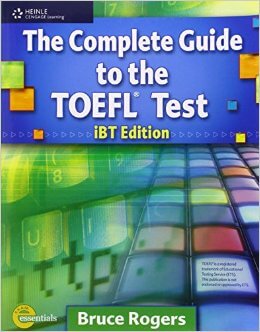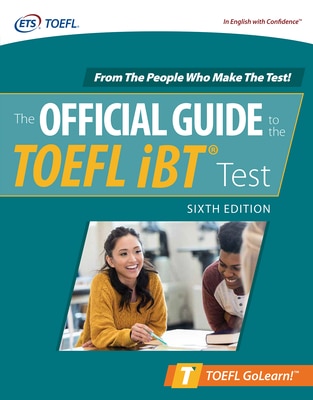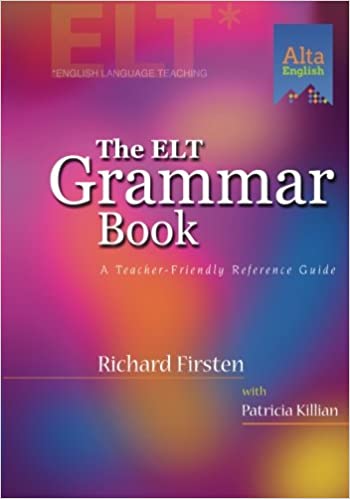(NOTE: The TOEFL books that Magoosh reviews and recommends reflect the older, pre-August 2019 version of the test. As of this writing, there are no TOEFL prep books that reflect the newest version of the test. Fortunately, older-format books are still very useful in prepping for the current TOEFL. For details on this, see Magoosh’s tutorial on using older prep for the 2019 TOEFL.)
 Don’t let the simplicity of the name deceive you–this book is not the official guide written by ETS, the makers of the test. And there’s no big test prep name (like Barron’s or Kaplan) anywhere on the book. Instead, the publisher, Heinle, is a more general English language book publisher with much less influence in the test preparation world. So why is this one of the first books I am reviewing?
Don’t let the simplicity of the name deceive you–this book is not the official guide written by ETS, the makers of the test. And there’s no big test prep name (like Barron’s or Kaplan) anywhere on the book. Instead, the publisher, Heinle, is a more general English language book publisher with much less influence in the test preparation world. So why is this one of the first books I am reviewing?
A few years ago, another TOEFL teacher told me that this was the best book on the market for TOEFL prep. Then, more recently, I found the same claim on a forum. The book is not extremely popular, and it didn’t seem very good for classroom use (I was teaching a class), so I didn’t research it, but the message was memorable. Every other TOEFL book I’ve used has been imperfect. Was it true that The Complete Guide was actually a perfect book?
Well, honestly, no. It has flaws. But this is fantastic resource, nonetheless. I definitely don’t recommend it for a classroom, but for self-study, it should get some serious attention, especially if you prefer books to studying for the TOEFL online or want to supplement internet-based preparation. (Remember that the TOEFL iBT is an internet-based test).
TOEFL Practice Material
The first and possibly most important point to make about this book is simple: there is a lot of material here. For example, there are more than 40 full length reading passages, and there are many more short ones, too. Most of those passages only ask specific question types (such as 10 consecutive vocabulary questions), but there is also a total of 4 full practice tests in the book–two at the end, and two broken up, mixed into the other chapters–which include the full range of question types. To have that much reading practice is almost unnecessary. Ultimately, it’s a good thing.
But the quality of those readings isn’t perfect. It’s good–better than many other books’ passages–but it’s inconsistent. Some passages are oddly structured or barely structured at all. The real TOEFL reading passages (in each of the reading, speaking, and writing sections) are very carefully structured. Some of those in the Complete Guide are a bit hurried. The level is, occasionally, too easy. The vocabulary is at the right level, but many sentences are too simplified and too direct. Still, the passages are on the right topics, the vocabulary is appropriate, and most of the passages are very similar to real TOEFL texts.
If the reading is good, the listening is even better, on average. It suffers some of the same problems that most TOEFL books do–poor acting, lectures that are too simply structured–but in general it is generally a very level appropriate, accurate representation of what you will hear on the real test. The book doesn’t come with a CD, though; instead, you have to listen or download from the publisher’s site, which is free, or buy the CDs separately, which is not free.
The questions are well written. There are very rarely questions that a native speaker might get “wrong” because they’re poorly made, like you might see in Oxford’s offering, for example.
Skill Practice
Good TOEFL preparation is a difficult balance to strike. There should be plenty of test-specific, TOEFL-like material, but there should also be skill-building exercises. For example, how do you speak more clearly? How should you organize your thoughts before that speaking task? How should you transition between thoughts in an essay? How do you find the main points in a reading passage?
Unlike many books, The Complete Guide strikes that balance very well. Other than your general English practice, the most important thing to improve is to get experience with the test. Writing transition words or conjugating verbs into gaps for 20 pages might help a little, but in the end, it’s writing the essays that makes you more comfortable. There is an abundance of skill-building in this book, and it is mixed very well with the TOEFL-specific practice. It could be better organized–the skill building should come before the test practice–but all of the major skills are included in the book, from pronunciation to grammar to note-taking. Granted, there are some skills which should get more attention, such as paraphrasing or finding the main points of a text. But there are few of these, and the good outweighs the bad. Most exercises are helpful and appropriate.
The biggest fault is vocabulary. Vocabulary is massively important for scoring highly on the TOEFL. It affects every section of the test: reading, listening, writing, and speaking. You don’t need to know rare words like “obstreperous” or “Luddite,” but you do need a good academic vocabulary including words like “behavioral” and “therein.” But it seems that the author picked words at random from the reading passages to go in his vocabulary lists. For example, “ idea,” “incessant,” and “jolly” are all in the same list. “Idea” is an incredibly common word that any student should already know; “incessant” is good, challenging vocabulary; and “jolly” will almost definitely not appear in any section of a TOEFL. These words do not belong in the same list.
Explanations
In the main book, there are no explanations. In fact, there are no answers! Instead, you need another book which has the answers, some explanations, and the scripts for the audio.
This is the biggest problem with the Complete Guide. After all, it’s not cheap, and that book of answers isn’t either! And if you bought the CDs as well as the main book? That’s a lot of material and money for just one book.
But knowing whether your answers were correct or not—and why you got wrong answers—is one of the most important parts of studying, so I do recommend buying the answer book. It’s not perfect, but some of it is very helpful. There are twelve sample essays, six for each task, each with sample notes, which is great, and there are brief explanations for every listening question. But many of the questions in the reading section aren’t explained–only answered with a letter–and the speaking section guidelines aren’t always helpful. Sample answer recordings, including both good and bad responses, would have been better.
I imagine there was simply too much material to spend a lot of time writing the explanations. Full explanations on each practice question or exercise might have filled another 800+ page book, so maybe I should be grateful that the answer book is as short as it is. Still, the book needs more explanation, and you shouldn’t have to buy a whole separate book for it.
Test Strategy and Advice
Again, the Complete Guide is generally good, but not perfect in this aspect. The direction and advice is written very clearly for even low-level students. This is one of the best parts of this book; many publishers don’t write for a TOEFL audience. Instead, they write in complicated English when they describe the test and the strategies, and that’s pointless. Maybe the reading passages will be difficult to understand, but the instruction should not be. The Complete Guide understands that point very well.
The test strategy is good, not great, and every aspect of the test is covered in sufficient detail. There are a few points that are lacking, though: a few places where the strategy should be more closely connected with practice activities, some strategies that are discussed too quickly or not discussed at all, and a couple of unrealistic strategies (such as trying to remember all 12-14 of the questions on a reading passage while you read). I think we will find better strategy in a future review of another book.
Report Card:
Authenticity of practice material: B
Amount of practice material: A+
Quality of explanations: F (Not in the book. If you buy the answer book, then I’d give that a C)
Skill building material: A-
Test strategy and advice: B
The Final Word:
This is definitely one of the top five books on the market for studying for the TOEFL by yourself, but it may not really be the best. My hunt for the perfect book continues!
But if you want a lot of practice, good strategy, and clear writing this is definitely a good book for you. Students who have a month or more to study for the test and only want to buy one book would do well to buy this one.





